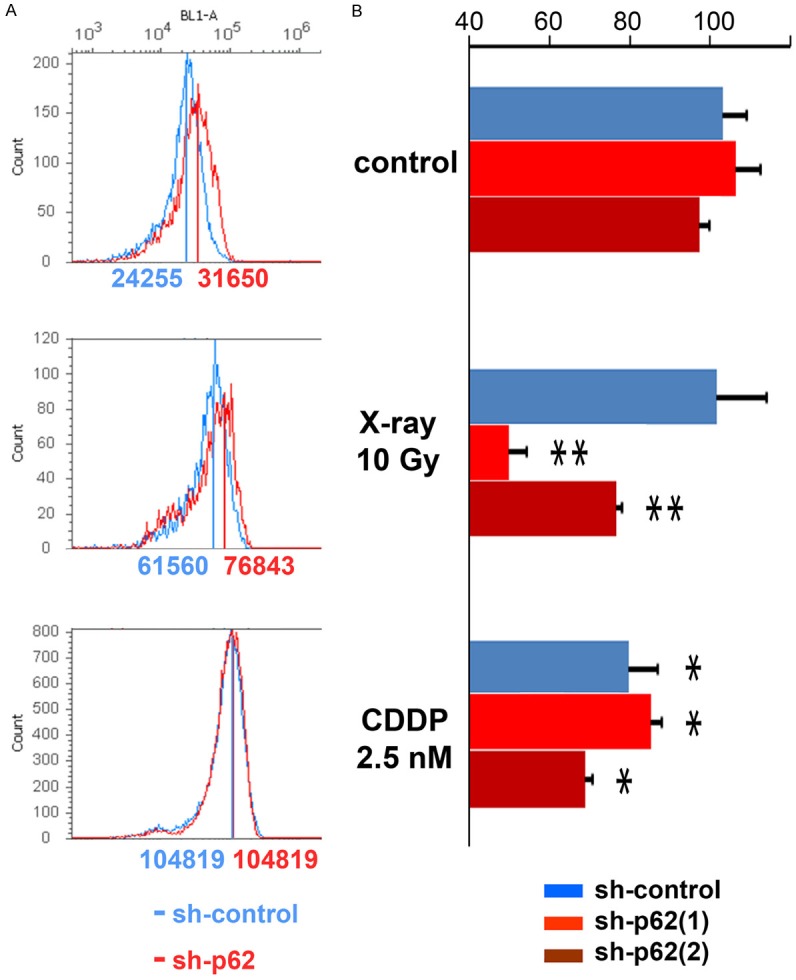Figure 5.

p62/SQSTM1 repression caused ROS accumulation and GSH/GSSG reduction especially under X-ray irradiation. A. ROS levels were higher in p62/SQSTM1 knockdown cells (red lines) than in the control ones (blue lines), under normal cultured conditions (control; upper: sh-p62 vs sh-control = 31650 vs 24255) and irradiation (10 Gy X-ray; middle: sh-p62 vs sh-control = 76843 vs 61560) conditions, whereas CDDP exposure (lower) promoted ROS accumulation in both the knockdown and control cells (sh-p62 vs sh-control = 104819 vs 104819). B. GSH/GSSG ratio wasn’t affected by p62/SQSTM1 knockdowns under control conditions in FaDu cells. The ratio was significantly reduced under X-ray irradiation in p62/SQSTM1 knockdown cells. **, P < 0.05, significant in one-way factorial ANOVA accompanied by Scheffe’s significance test, referring to sh-control cells in control and X-ray-irradiated conditions. CDDP exposure (2.5 nM) affected GSH/GSSG ratio in all the shRNA cells regardless of p62/SQSTM1 status; *, P < 0.05, significant, only referring to sh-control cells in control cultured condition.
